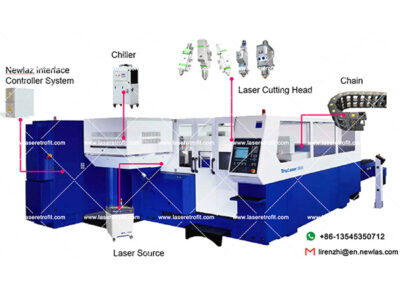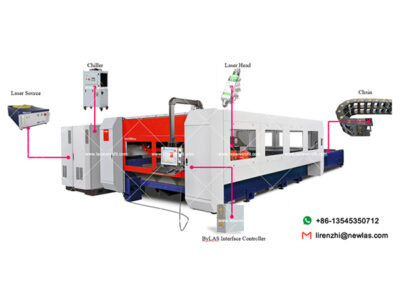A laser cutter works by focusing a beam of coherent light onto the material. The concentrated energy heats the metal above its melting point. This cuts through the metal, but the molten material doesn’t simply vanish into thin air. Instead, it partially attaches itself to the surrounding hot material, creating a very rough surface around the cut.
Not only would this look bad, but it would also be a safety hazard as the shards of metal would be very sharp. To avoid this, a gas is blown onto the steel at high pressure alongside the laser beam nozzle to remove the molten or vaporised material away from the cut. The most commonly used gases for this purpose are nitrogen and oxygen.

Oxygen as a laser auxiliary gas
When oxygen is used as a laser auxiliary/assist gas, it reacts with the metal in an exothermic reaction. An exothermic reaction creates heat in the surrounding material, which has the benefit of speeding up the cutting process. Without going into any more complex chemistry, oxygen essentially magnifies the laser power.
Therefore, oxygen is a more cost-effective method as less energy is required.
However, the heat caused in the reaction also means that the gas cannot properly do its job of removing the molten material. Some material will remain on the underside of the cut, creating a residue. Not only does this look untidy, but a powder coat will not be able to properly adhere to it. That means the powder coat will start to break down long before it.
Nitrogen as a laser auxiliary gas
Using nitrogen as a laser auxiliary/assist gas is a modern innovation; traditionally, oxygen was mainly used. However, nitrogen has the distinct advantage of being an inert gas, which means it does not react with the molten metal like oxygen does.
Therefore, using nitrogen when laser cutting will result in a clean edge because all the molten material can be removed.
In order to make a proper decision between oxygen and nitrogen, the following criteria must be considered:
1. Processing speeds
Oxygen cutting speeds are limited by the power that can be applied, whereas nitrogen cutting speeds are directly related to power. In some cases, higher laser powers where nitrogen is employed in cutting thin steel allow the laser user to expect processing speeds three times to four times faster than what can be achieved when using oxygen. However, laser cutting of steel with nitrogen is not limited to thin material. Nitrogen can be used as an assist gas for thicker steels, with the maximum thickness depending on the available laser power. While nitrogen will provide faster processing speeds in steel up to 1/8 in, this is not the case in thicker materials, in which case oxygen will provide faster speeds as material thickness increases.
2. Secondary operations, including edge quality required
Nitrogen will provide a superior edge quality free of any impurities. This edge is highly receptive to powder coat paint, and it also ensures a proper weld surface. This method of cutting generally eliminates the need for any secondary operations. However, the oxide surface produced by an oxygen cut can affect powder coat paint as well as welding. In general, steels greater than 14 gage require this surface to be removed for powder coat paint.
3. Operation cost
The primary contributing factor to operating costs is assist gas consumption. There is a significant difference between oxygen and nitrogen. Processing with oxygen can result in the lowest cost of operation, as the consumption rate of gas can be up to 10 times to 15 times less than the requirements for nitrogen. Generally speaking, as thickness increases nitrogen assist gas consumption increases.
Taking all of the factors into consideration, here are some suggestions for your reference.
- In thin steels, if a laser user can increase their processing speeds and produce more parts with better quality at either the same or slightly greater cost, then nitrogen should be strongly considered as the assist gas.
- As material thickness increases, the decision becomes more challenging. If the parts to be produced require secondary operations, the user must weigh the costs of the additional processes and handling in order to determine if the cost of the additional nitrogen in the laser cutting process will provide the most cost effective solution.






